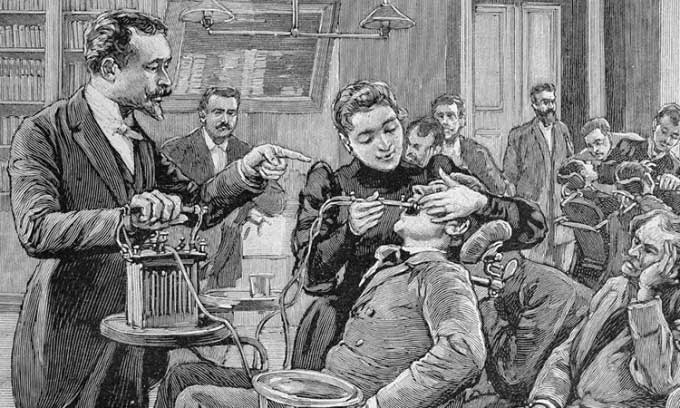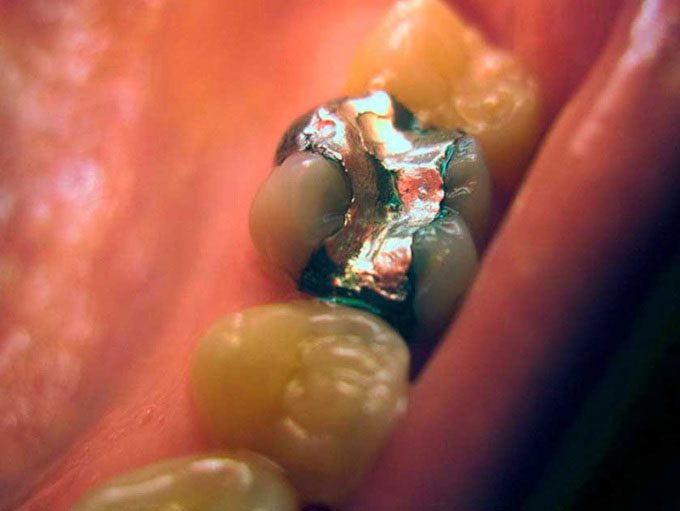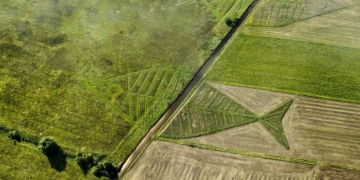In the 1800s in America, many patients visited dentists with an unusual complaint – their teeth were exploding in their mouths.
In 1817, a man from Mercer County, Pennsylvania, began experiencing the worst toothache of his life, nearly driving him to madness. “In agony, he ran back and forth in a desperate attempt to find relief. At times, he would bow his head to the ground like a crazed animal, other times he would thrust his head beneath the corner of the fence, and at times he would go to the stream and dip his head into the cold water. This frightened his family, who took him into a cabin and did their utmost to keep him calm.” Dentist W.H. Atkinson wrote in the Dental Cosmos magazine in 1860.

Teachers and students at the Dental School in Paris in the late 1800s. (Photo: L. Tynaire).
“However, it was all in vain. At 9 AM the next morning, as he was walking across the floor in pain, suddenly a sharp sound like a gunshot was heard, a tooth shattered into pieces, and he immediately felt relief. At that moment, he turned to his wife and said, ‘I’m no longer in pain.’ He went to bed and slept soundly the entire day and most of the next night. After that, he became alert and healthy,” Atkinson continued.
The dentist also described two other cases in 1830 and 1855. Similar to the man from Mercer, they experienced increasing pain, followed by a sudden sharp pain, a tooth shattered, and the pain instantly subsided. In one instance, the tooth was noted to have broken into many pieces.
These are not isolated reports from a single dentist. Numerous reports from other dentists indicate that this phenomenon, though strange, actually occurred.
“Just before the explosion, the tooth was excruciatingly painful, disturbing the equilibrium of every part of her body to the extent that it caused her to occasionally act with a somewhat unusual mindset,” wrote dentist J. Phelps Hibler about a patient in 1874.
“There were no other symptoms besides the severe pain beforehand; the first lower right molar suddenly exploded, nearly causing her to fall. The tooth was split directly from the side near the tongue to the side near the cheek, shattering and simultaneously causing discomfort along the Eustachian tube, ultimately leading to her prolonged deafness. The entire event transpired in an instant, and the tooth stopped hurting immediately,” Hibler stated.

Improper filling techniques may be the cause of the exploding teeth phenomenon. (Photo: Kauzio)
As cases of exploding teeth disappeared around the 1920s, modern experts cannot study them directly. However, dentists have proposed several theories.
One theory suggests that gas accumulation inside a decayed tooth could cause it to explode. While gas accumulation in a tooth can occur, for example, through incomplete root canals, it would not create enough pressure to cause a tooth to explode in the mouth as described.
Andrea Sella, a professor of Inorganic Chemistry at University College London, offers a more plausible explanation. According to him, the phenomenon of exploding teeth may be due to old chemicals used for dental fillings. In the 1800s, various metals were used to fill cavities, from tin to lead, even though they were unsuitable. Using two different metals in a patient’s mouth could turn it into a sort of battery.
“The mixture of metals in the mouth could trigger spontaneous electrolysis. The explanation I favor is that poor filling allowed some of the cavity to remain, which could lead to hydrogen accumulation in the tooth,” Sella explained to the BBC. Subsequently, the tooth could explode due to pressure or be ignited, for example, while smoking.
Today, experts are still unclear on the exact cause, as there is no evidence that patients had previously filled teeth. Nevertheless, since the phenomenon of exploding teeth no longer occurs, it is likely that the cause stemmed from outdated dental methods.



















































